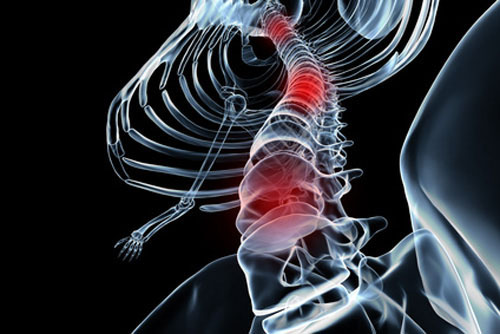Team deleted a cell growth inhibitor PTEN to control the mTOR pathway.
A group of researchers report that they have induced the regeneration of nerve connections that control voluntary movement after spinal cord injury in rodents. The UC Irvine (UCI), UC San Diego (UCSD), and Harvard University team achieved this by turning back the developmental clock in a molecular pathway critical for the growth of corticospinal tract (CST) nerve connections.
They did this by deleting an enzyme called PTEN (a phosphatase and tensin homolog), which controls a pathway called mTOR, which is a key regulator of cell growth. PTEN activity is low early during development, allowing cell proliferation. PTEN then turns on when growth is completed, inhibiting mTOR and precluding any ability to regenerate.
Trying to find a way to restore early developmental-stage cell growth in injured tissue, Zhigang He, Ph.D., a senior neurology researcher at Children’s Hospital Boston and Harvard Medical School, first showed in a 2008 study that blocking PTEN in mice enabled the regeneration of connections from the eye to the brain after optic nerve damage.
Dr. He then partnered with Oswald Steward, Ph.D., of UCI and Binhai Zheng, Ph.D., of UCSD to see if the same approach could promote nerve regeneration in injured spinal cord sites. Results of their study appear online in Nature Neuroscience in a paper titled “PTEN deletion enhances the regenerative ability of adult corticospinal neurons.”
The investigators found that PTEN/mTOR are critical for controlling the regenerative capacity of mouse corticospinal neurons. The regrowth potential of CST axons was lost after development. This was accompanied by a downregulation of mTOR activity in corticospinal neurons. Axonal injury further diminished neuronal mTOR activity in these neurons.
Forced upregulation of mTOR activity in corticospinal neurons by conditional deletion of PTEN enhanced compensatory sprouting of uninjured CST axons. It enabled successful regeneration of a cohort of injured CST axons past a spinal cord lesion, the scientists report. Furthermore, these regenerating CST axons possessed the ability to reform synapses in spinal segments distal to the injury.
Thus, modulating neuronal intrinsic PTEN/mTOR activity represents a potential therapeutic strategy for promoting axon regeneration and functional repair after adult spinal cord injury, the researchers conclude.
The team is now studying whether the PTEN-deletion treatment leads to actual restoration of motor function in mice with spinal cord injury. Further study will explore the optimal timeframe and drug-delivery system for the therapy.
“Until now, such robust nerve regeneration has been impossible in the spinal cord,” notes Dr. Steward, anatomy and neurobiology professor and director of the Reeve-Irvine Research Center at UCI. “Paralysis and loss of function from spinal cord injury has been considered untreatable, but our discovery points the way toward a potential therapy to induce regeneration of nerve connections following spinal cord injury in people.”







